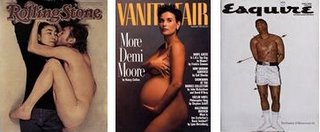You can't do a site on Filipino Design without mentioning
Lucille Tenazas, the one of the biggest names in the graphic design field.
According to Lilia.com and the Tenazas Design website:
"Her work is widely regarded for its unique approach to graphic design which is considered rigorous, thoughtful and provocative. Her design reflect an interest in the complexity of language and the overlapping relationship of meaning, form, and content. By merging the poetic and the pragmatic, Tenazas achieves a fluid and flexible approach to design, one that is human as well as critical."She is widely respected in both Europe and America, both east and west coasts. She was chosen as one of the ID Forty, in
ID Magazine's 1995 selection of the 40 leading design innovators. From 1996-1998, she was the national president of the American Institute of Graphic Arts (AIGA).
I was taking a typography class at the Academy of Art College when my instructor Mike Kohnke mentioned her during lecture on the history of type design. I mentioned it to my boss Lisa Yuchengco and asked if we ran an article on her in
Filipinas Magazine. My boss said we featured her years ago back in 1994. She's well sought after and hard to get a hold of.
When I was laying out an article on Tony Robles and Carl Angel's book "Lakas and the Manilatown Fish", I had to get a picture of Lucille since she designed the book. I left word with an assistant if I can get Lucille's picture, he said he'll get back to me to see if they had any. A couple of days later, the phone rang
"Is this the art director? This is Lucille Tenazas." The lids of my eyes pulled up to its apex as this strong woman's voice shot through the phone. As I listened to her concerns about the picture, one thing kept repeating in my mind
"You are talking to Lucille Tenazas. Don't. Say. Anything. Stupid." The article just mentioned her as a designer but didn't talk about the design in detail, so she felt it's okay not to have a picture, if I needed a picture I can use the one on the jacket cover (but I used another photo instead).
http://www.tenazasdesign.com






